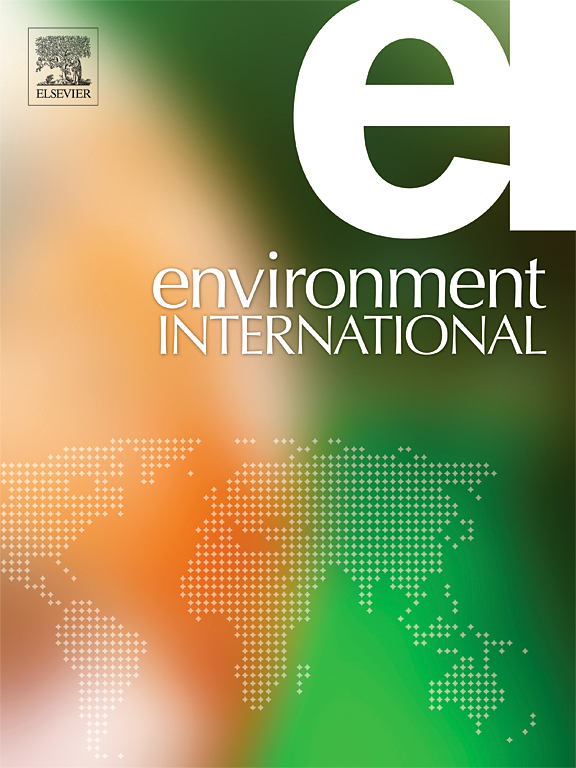Development of a highly sensitive reporter gene cell line for detecting estrogenic activity (the ER Isjaki assay)
IF 10.3
1区 环境科学与生态学
Q1 ENVIRONMENTAL SCIENCES
引用次数: 0
Abstract
Monitoring of estrogens in water sources faces significant challenges, as proposed changes in the European Union regulation for environmental protection of water bodies, compromise the ability of conventional analytical methods to detect low concentrations of estrogens. The proposed changes involve the decrease of the environmental quality standards for 17β-estradiol, estrone and 17α-ethinyl estradiol in surface waters and the obligation to monitor estrogenic substances in water bodies, using effect-based methods. In this study, the optimal experimental conditions for developing a novel and highly sensitive reporter gene assay were established. For this purpose, optimization of transfection plasmid concentration, exposure time and basement membrane matrix effect as well as assessment of assay reproducibility and relative effect potency of natural estrogens and estrogenic substances were conducted. With the optimal experimental conditions set as 5 ng per well in 96-well uncoated plates for plasmid transfection and 24 h exposure to treatments, the assay yielded an average sensitivity, measured as effect level 20 % for 17β-estradiol, estrone and 17α-ethinyl estradiol of 0.29, 1.36 and 0.02 pM, respectively. The assay showed a reproducibility variation of approximately 20 % and was able to differentiate the relative effect potency between 17α-ethinyl estradiol and 17β-estradiol with the capacity of detecting 17α-ethinyl estradiol with a high relative effect potency. Moreover, this assay is approximately 10–100 times more sensitive compared to the current state-of-the-art in vitro assays used to measure estrogenicity, indicating that the assay can be used to detect 17β-estradiol, estrone and 17α-ethinyl estradiol at the low levels needed to meet regulatory standards.
用于检测雌激素活性的高敏感报告基因细胞系的建立(ER Isjaki法)
监测水源中的雌激素面临着重大挑战,因为欧洲联盟关于水体环境保护条例的拟议变化损害了传统分析方法检测低浓度雌激素的能力。拟议的修改包括降低地表水中17β-雌二醇、雌酮和17α-乙基雌二醇的环境质量标准,以及使用基于效果的方法监测水体中雌激素物质的义务。本研究建立了一种新型高灵敏度报告基因检测的最佳实验条件。为此,我们对转染质粒浓度、暴露时间、基底膜基质效应进行了优化,并对天然雌激素和雌激素类物质的实验重现性和相对效价进行了评价。在96孔无包被板上设置质粒转染的最佳实验条件为每孔5 ng,处理24 h时,该方法对17β-雌二醇、雌酮和17α-乙基雌二醇的平均灵敏度为20 %,分别为0.29、1.36和0.02 pM。结果表明,该方法的重复性变化约为20% %,能够区分17α-乙炔雌二醇和17β-雌二醇的相对效价,并具有检测相对效价高的17α-乙炔雌二醇的能力。此外,与目前用于测量雌激素原性的最先进的体外检测方法相比,该检测方法的灵敏度约为10-100倍,这表明该检测方法可用于检测17β-雌二醇、雌酮和17α-乙基雌二醇,但含量较低,需要满足监管标准。
本文章由计算机程序翻译,如有差异,请以英文原文为准。
求助全文
约1分钟内获得全文
求助全文
来源期刊

Environment International
环境科学-环境科学
CiteScore
21.90
自引率
3.40%
发文量
734
审稿时长
2.8 months
期刊介绍:
Environmental Health publishes manuscripts focusing on critical aspects of environmental and occupational medicine, including studies in toxicology and epidemiology, to illuminate the human health implications of exposure to environmental hazards. The journal adopts an open-access model and practices open peer review.
It caters to scientists and practitioners across all environmental science domains, directly or indirectly impacting human health and well-being. With a commitment to enhancing the prevention of environmentally-related health risks, Environmental Health serves as a public health journal for the community and scientists engaged in matters of public health significance concerning the environment.
 求助内容:
求助内容: 应助结果提醒方式:
应助结果提醒方式:


